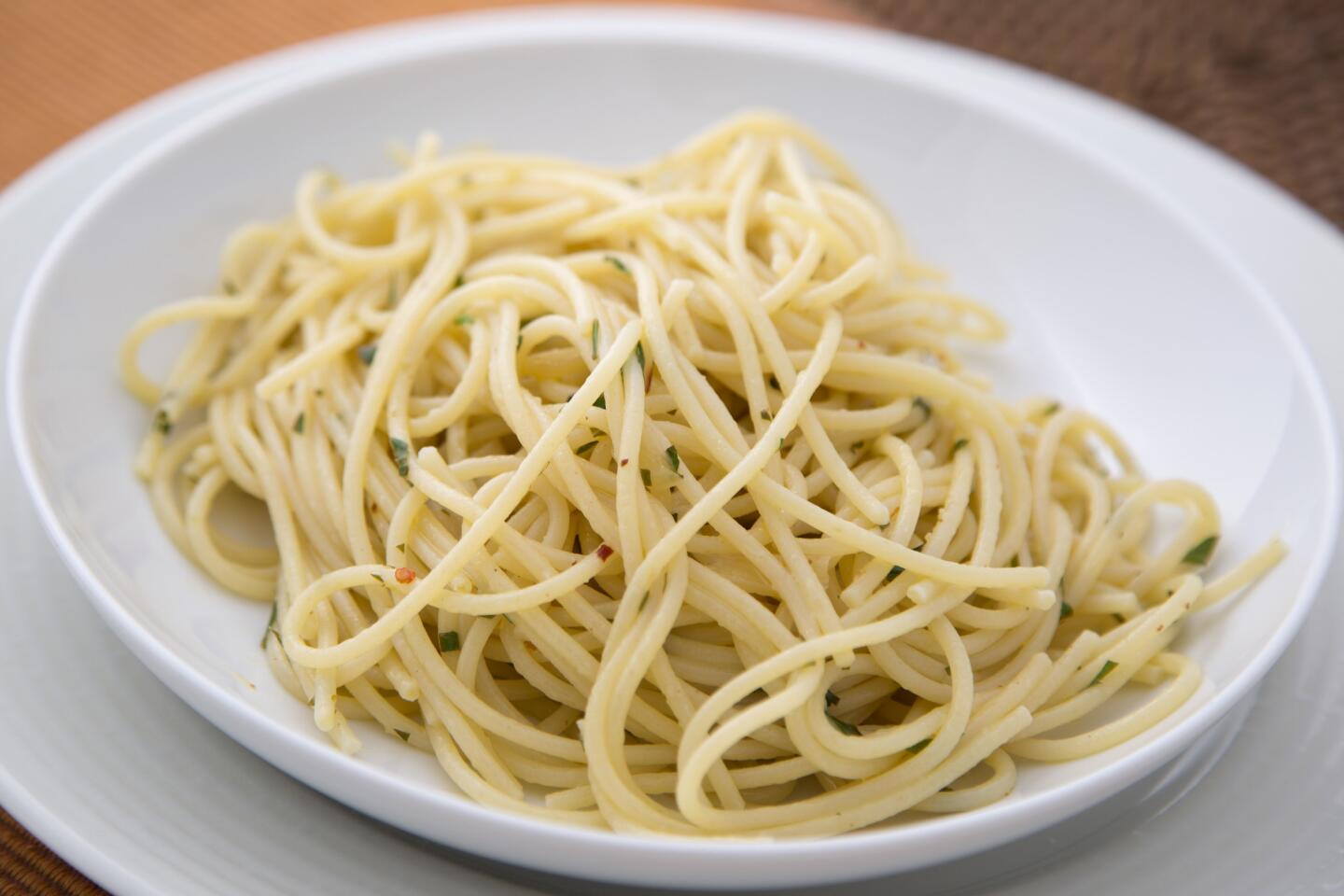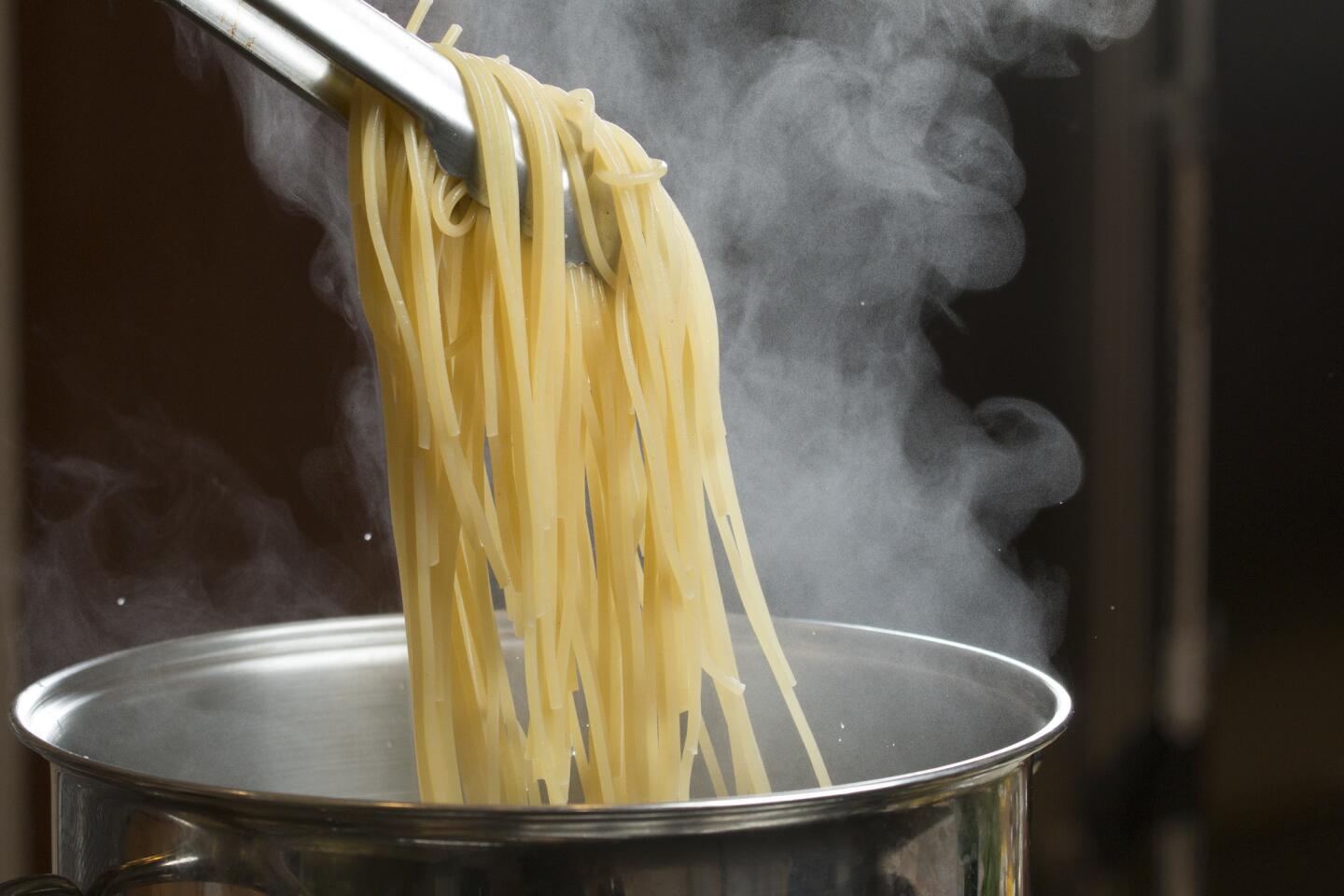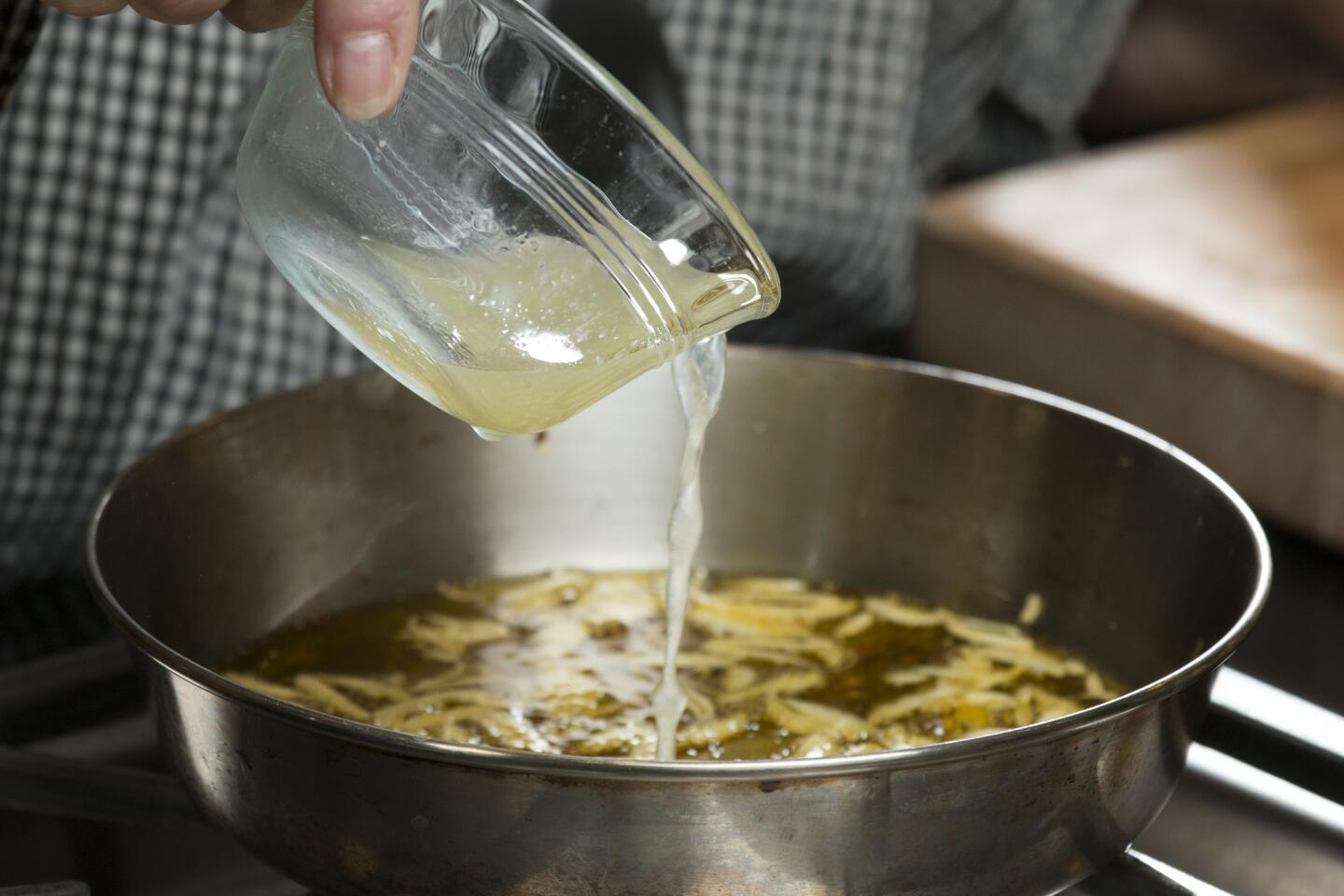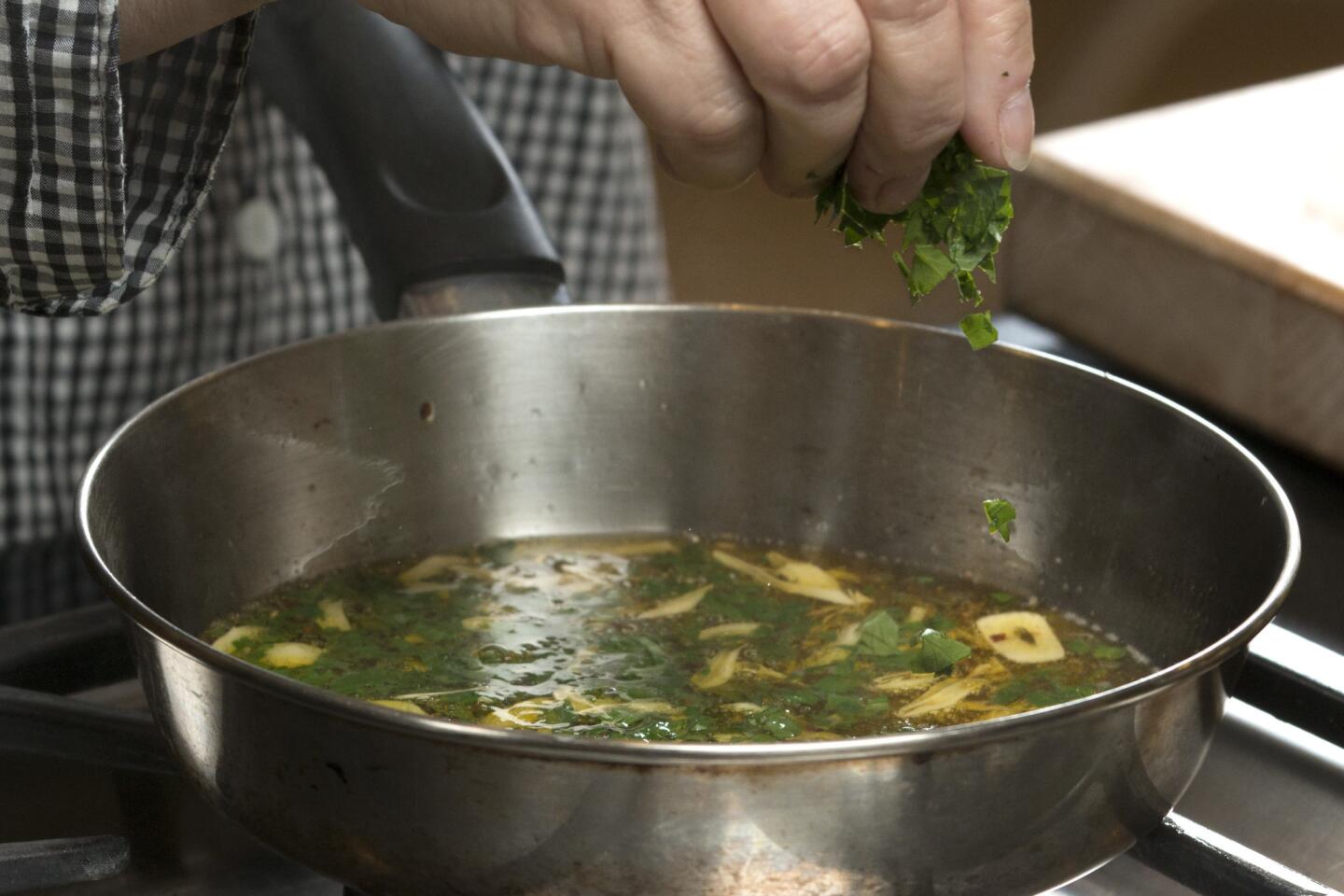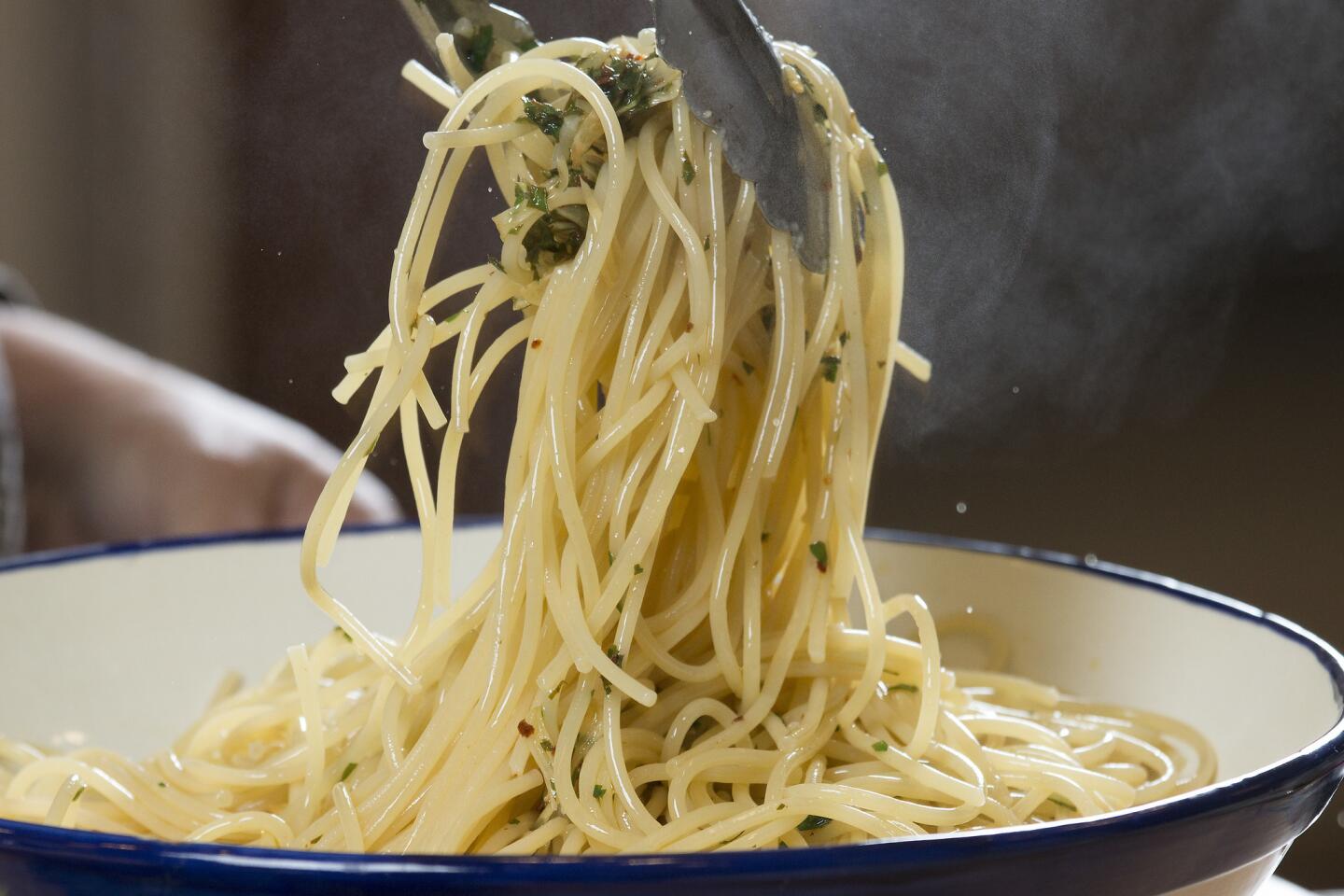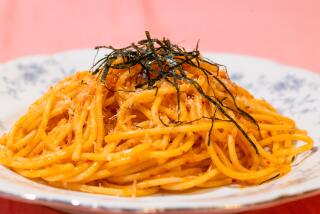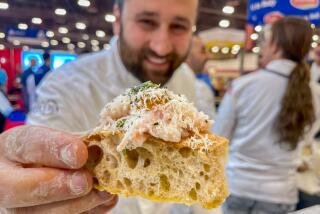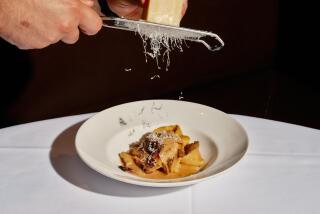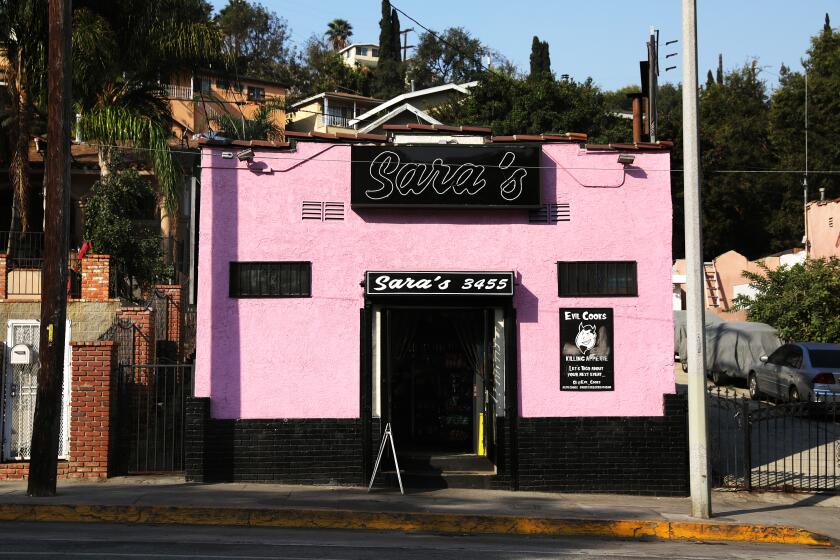Pasta PSA: Please don’t buy terrible supermarket fresh pasta. Here’s why
If imported Italian dry pasta were choice A and fresh pasta were choice B and I could only choose one to eat for the rest of my life, there would be no contest. I’d choose A, dry pasta.
Many home cooks, bamboozled by the glut of fresh pasta in restaurants, have come to believe that if it’s the chef’s choice, then it’s the better product. It is not.
Almost 30 years ago in “Pasta Fresca,” the book I coauthored with Viana La Place, we talked at great length about fresh versus dry pasta and how one is not an inherently better product but each has unique attributes that work in differing roles. It makes me a little nuts that all this time later, and with so much culinary information shared by so many, the seduction of soft, yellowish noodles still pushes the wheaty aroma and meaty texture of high-quality dry pasta aside. Fresh pasta isn’t better. It’s a completely different thing, often tender and rich with egg.
These days you too often find restaurant “crafted,” no-egg, extruded pasta that isn’t skillfully made or is so improperly dried that it ends up being a mealy accompaniment to a well-made sauce. It ruins the dish — and the appetite.
In my quest to understand why so many new restaurants insist on making their own noodles, I reached out to several chefs for whom fresh pasta is not necessarily a regional culinary choice. I asked what pasta they like to eat at home, and why they choose to serve only fresh pasta in their restaurants.
Nancy Silverton didn’t even let me get the question out of my mouth before she went on a rant of her own. “Of course dry pasta is better!” she said. “People need to be patient!”
And please do not buy terrible supermarket fresh pasta and think you’re having a ‘gourmet’ experience.
Overwhelmingly, they answered that they eat dry pasta at home but, due to service issues — brought on by the combination of dry pasta cook times and the impatience of diners — they decided that fresh pasta was the best solution to a challenging problem.
A note here: This essay is about my love for dry durum wheat pasta. That said, fresh pasta, made well and served with appropriate sauces, is a great dining experience and there are many chefs in this town who do it spectacularly well.
Fresh pasta will cook up in two to four minutes, making easy work of putting out 20 plates of pasta in 10 minutes. Dry pasta, however, takes eight to 15 minutes to cook. That lag time is a real challenge to chefs with limited space for vast pools of boiling water holding many individual cooking baskets. In other words, chefs seem to universally love dry pasta but find it a logistical nightmare during service.
But you, the home cook, do not have this quandary. You’re making a pound or two, all to be served at once — which frees you to embrace the deep textural satisfaction of durum wheat dry pasta. So don’t dispense with one of the best pantry staples around. And please do not buy terrible supermarket fresh pasta and think you’re having a “gourmet” experience.
So let’s explore why a simple box of dry pasta is such a beloved staple.
A box of dry pasta has the powerful combination of subtle wheaty aroma and chewable meaty texture. This subtle flavor acts as a foundation for flavorful sauces — think puttanesca or the simpler aglio e olio. Piquant tastes merge into the porous noodles to convey flavor to the brain, and that combination of texture and taste is what makes a food craveable. Often it’s texture that causes us to fork up that tenth mouthful of the same dish. Mouthfeel is primal and, oh, so hard to describe.
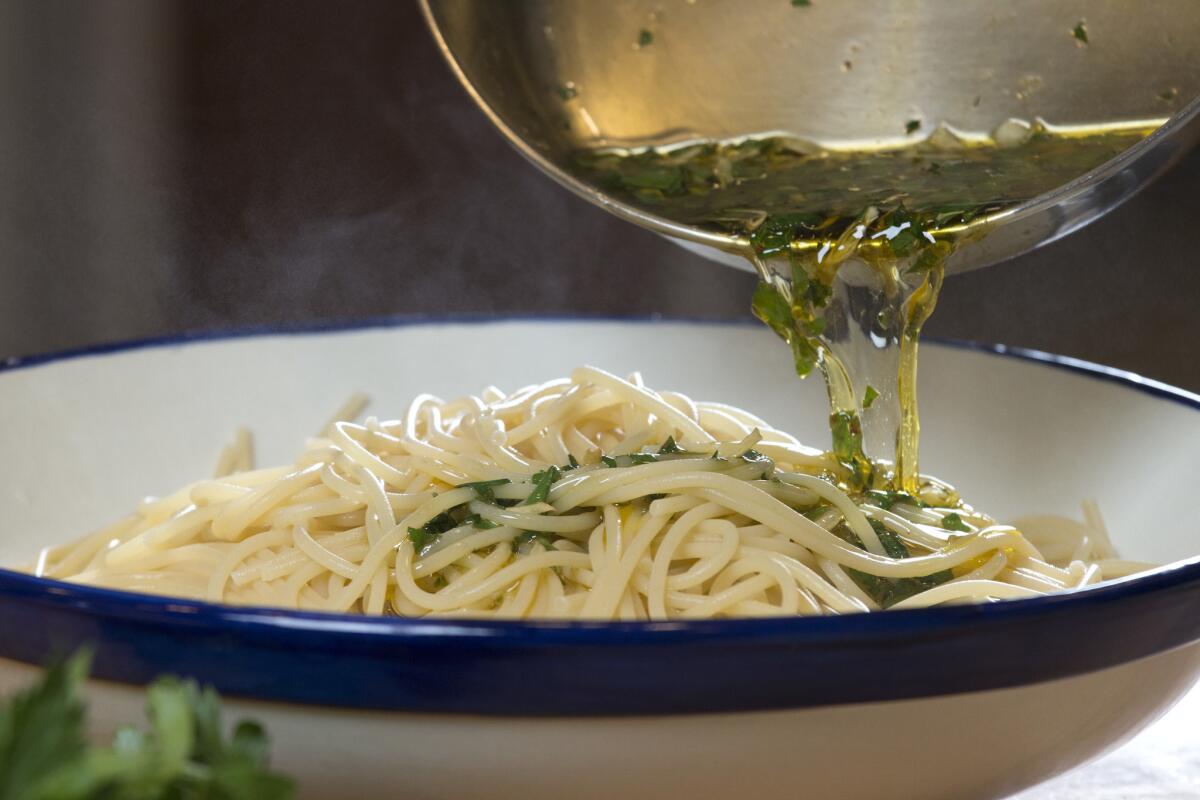
In the Italian kitchen, texture is rarely discussed, but it’s there fueling our desire to wind up a few more strands of pasta on the fork. It’s what makes children purse their lips and suck that slippery strand of spaghetti into their mouths, thereby fueling an addiction that will last a lifetime. It is why al dente is such a prized quality in pasta — and why it is so poorly understood away from its mother-ship culture.
What is al dente, and why is it such a prized texture in Italian pasta land?
The perfect texture of cooked pasta is so elusive that it might be easier to describe what it isn’t. For example, a flaccid, overcooked noodle that doesn’t need teeth to chew it would not be al dente. Similarly, a crunchy noodle that is so undercooked that it doesn’t bend isn’t on point either.
When you cook pasta for a living — standing in front of the piece of restaurant equipment that is a waist-high boiling box of water — you know al dente when you see it. Al dente is the precise moment the pasta relaxes into a full bend. When you dip your tongs into the water and grab a few strands, you know. If you were to pinch one of those strands in two, you would see a pinpoint dot of as-yet-uncooked white; that’s the moment to drain and sauce the pasta. By the time you get the pasta to the table and eaters start forking it up, that dot is cooked through and the noodle is perfect.
Al dente literally means “of the tooth.” And this is the one instance for which the word “toothsome” is the perfect definition. Good dry pasta cooked al dente and lightly sauced is at once a vehicle for the flavors absorbed into its porous cells and a triumph of satisfying texture. It is chewable yet yielding, slithery yet not soft. It is perfect.
The sauce to best show off the attributes of great dry pasta is that triumph of simplicity, aglio e olio, the classic no-sauce sauce of garlic, oil and chile. Even if the chile pepper — or, in Italian, peperoncino — is not included in the title, it is assumed to be in the dish, not there for spice, exactly, but to enliven the dish. (If you’ve been wondering how to pronounce aglio correctly, it’s a-yee-oh.)
Aglio e elio is more a condiment than an actual sauce and as such requires that each component be at its best. The olive oil should be extra virgin and pressed within the last year. The garlic cloves must be fat and unsprouted. If you’re making the dish in spring, use freshly harvested new garlic bulbs that haven’t yet been dried. Add a small chile or a pinch of good dried chile flakes. I add a squeeze of lemon, a pinch of salt and a bit of chopped parsley to make the pasta pop. It’s the perfect template to embellish, perhaps with a can of tuna or a couple of sweet shrimp or a bit of crab that you’ve sautéed in butter or oil. Or just eat on a warm day accompanied by a glass of chilled wine and a crisp salad.
And if you want to watch a great aglio e olio being made, check out the movie “Chef” and the scene in which Jon Favreau’s character makes Roy Choi’s version of the dish for Scarlett Johansson’s character. The first time I saw it, I thought Choi had been reading my mind.
Kleiman ran Angeli Caffe for 27 years. She’s the longtime host of KCRW-FM’s “Good Food” and a member of the James Beard Foundation’s Who’s Who of Food & Beverage in America.
ALSO:
Making pasta all’Amatriciana, the classic Italian pasta dish
Lost pasta brand sparks Test Kitchen pot-boiler to find best dried spaghetti
More to Read
Eat your way across L.A.
Get our weekly Tasting Notes newsletter for reviews, news and more.
You may occasionally receive promotional content from the Los Angeles Times.
